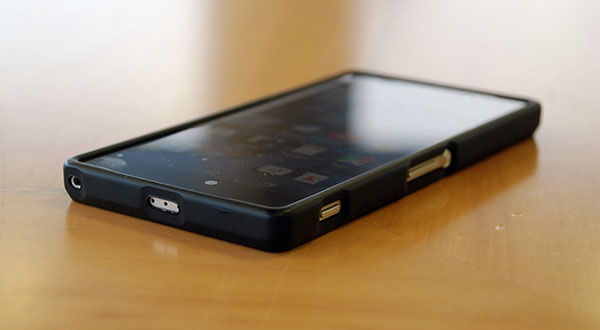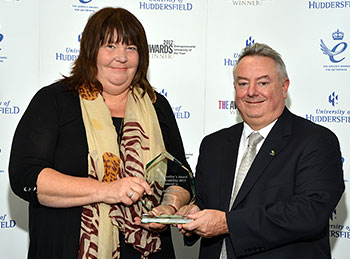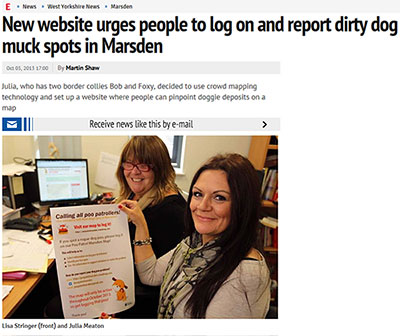Crowdmapping could be answer for everything from Ebola to dog poo

Thu, 15 Jan 2015 15:43:00 GMT
Researcher Dr Julia Meaton shows that mobile technology can motivate a community whatever the problem
 Pictured left: Dr Julia Meaton receives the Vice-Chancellor's Award for Sustainability from Vice-Chancellor Professor Bob Cryan.
Pictured left: Dr Julia Meaton receives the Vice-Chancellor's Award for Sustainability from Vice-Chancellor Professor Bob Cryan.
SMARTPHONES, social media and the process dubbed ‘crowdmapping’ can be used to tackle challenges ranging from the spread of ebola to ensuring that elections are free and fair. They can also track the fallout from nuclear catastrophes and aid recovery in the aftermath of earthquakes.
The University of Huddersfield’s Dr Julia Meaton is researching and teaching the global potential of this burgeoning field of technology and she is also using it to deal with a problem on her own doorstep – the annoyance and health hazards caused by dog poo in her Pennine community.
Dr Meaton – a geographer by background – is a Senior Lecturer in the University’s Business School, and course leader for the MSc in Risk, Disaster and Environmental Management. She has expertise in community sustainability, disaster and emergency management, social enterprise, land use and transport planning and she has been closely involved in several overseas projects.
Her latest article – co-authored with Lisa Stringer, who works for Public Health England’s northern Emergency Preparedness, Resilience and Response team (EPPR) – is titled The use of social media by UK local resilience forums. It appears in the new issue of Emergency Management Review and it reports on a survey into the extent that social media are being used by the UK’s EPPR teams.
A mixed picture emerges and the authors argue that there should be greater use of social media for “warn and inform” functions. They also provide evidence that crowdmapping – which enables information about an incident or a problem to be gathered by smartphone users and then placed on an online map – can have clear benefits for EPPR strategy, although low levels of understanding have led to a lack of implementation.
Crowdmapping originated during turbulent Kenyan elections in 2008. Technologically-astute democracy campaigners in the country developed a social media platform named Ushahidi, which means “testimony” in Swahili. It was a website that enabled users to map reports of violence and corruption.
Since then, the Ushahidi platform has found many uses in the wake of events such as the Haitian earthquake of 2010, the Fukushima nuclear disaster of 2011 and the current Ebola epidemic in Africa, where crowdmapping is being used not only to log the location of victims, but also to identify roads and routes that could help with development of the infrastructure needed to fight the disease.
 Crowdmapping to combat dog fouling
Crowdmapping to combat dog fouling
Pictured right: A news story in the Huddersfield Examiner about the Poo Patrol Marsden website with Dr Julia Meaton and Lisa Stringer (front).
Her research has meant that Dr Meaton is highly enthusiastic about the potential of crowdmapping and other social media techniques. It might, for example, aid her work among the forest dwellers of Ethiopia, where smartphones could be used to help with the harvest of rare and valuable crops of wild coffee. Closer to home, she and her co-researcher Lisa Stringer, also realised that one of the most vexed issues in the village of Marsden could be a candidate for crowdmapping.
They launched the Poo Patrol Marsden website, enabling locals to map deposits of dog dirt, identifying where the problem was worst and providing useful data for the local authority and dog wardens. The data could also be the basis for local public information campaigns and there was an exceptional response from locals.
“We set up the map on the website and had a system where people described what the poo was like using the Bristol Stool Chart, which is used in hospitals. By using their mobile phones and their computers people could go direct to the map and put in a flag in to log where the poo was and add their description,” said Dr Meaton.
The project led to an award of funding from the Future City and Community Resilience Network and now it has a new phase, because Julia Meaton and Lisa Stringer have devised a plan to appoint a part-time “Poo Fairy” in Marsden. It would be an ironic twist on the belief held by some dog owners that a fairy does follow them around, clearing up their animal’s mess. The real-life Poo Fairy would do just that – but also hand out bags to dog owners and educate them in the need to pick up the poo for themselves.
The Poo Fairy concept has already earned widespread media attention, but the next question is how to find the estimated £6,000 required to pay for the post. Once again, social media could provide an answer.
This time a crowd funding appeal could persuade a few thousand people to part with a pound each to pay for a Poo Fairy. Dr Meaton and her colleague are now investigating the possibilities and although the project has its fun side, they believe that it could be a useful demonstration of how new social media technologies can lead to public engagement and community action.







